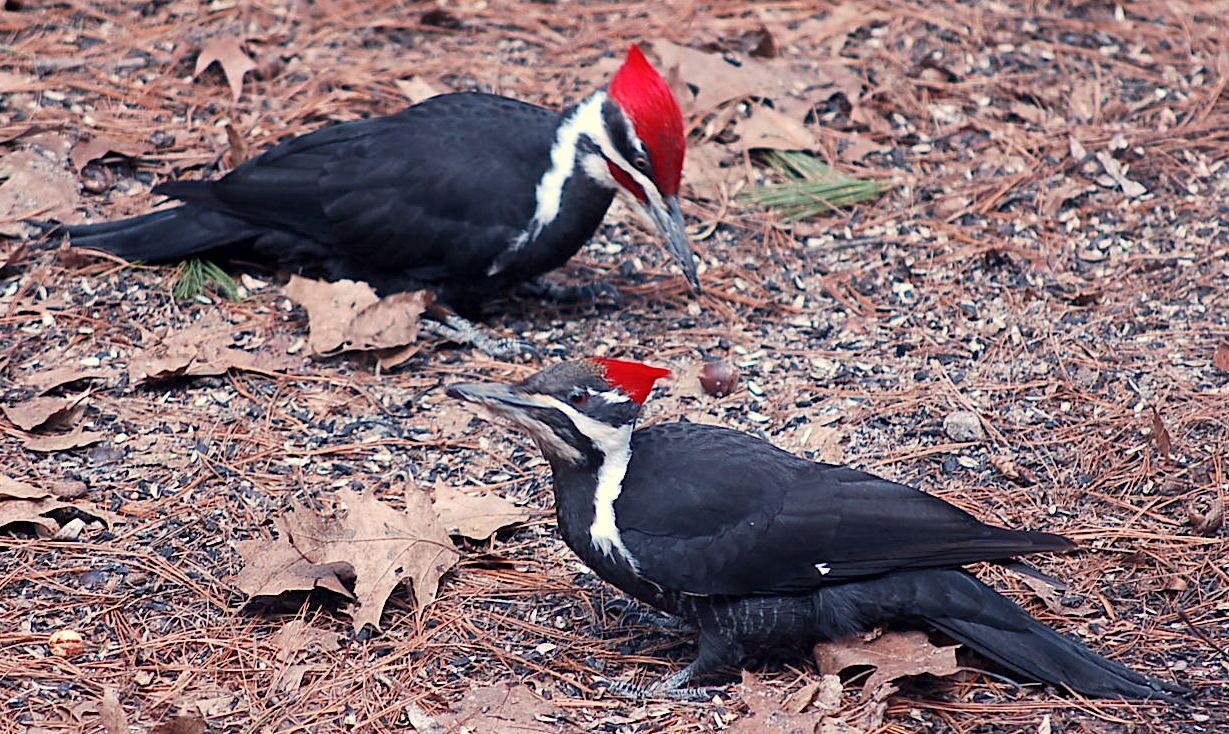Woodpeckers in Florida: Natural History, Ecology, and Conservation
Wiki Article
Introducing the Secrets of Woodpeckers: Habits, Environment, and Extra
Woodpeckers, with their one-of-a-kind actions and specialized adjustments, have actually long amazed scientists and nature enthusiasts alike. By uncovering the enigmas bordering woodpeckers' habits and habitat choices, a deeper understanding of these bird marvels arises, offering a glance into their interesting globe.Woodpecker Actions Insights
In checking out woodpecker actions, a remarkable screen of specialized skills and adaptations arises, dropping light on their amazing ecological particular niche - Woodpeckers in Florida. Woodpeckers, understood for their unique drumming on trees, have a range of behavioral attributes that add to their survival and success in their environment. One essential behavior is their drumming, which offers several purposes such as interaction, establishing region, drawing in mates, and finding food sources. This balanced pecking also showcases their impressive strength and endurance, as they can hammer away continually at high speeds without creating harm to themselves.Moreover, woodpeckers show a distinct feeding actions characterized by their capability to extract bugs from tree bark utilizing their specialized beaks. Their long, barbed tongues aid in catching target, while their strong neck muscle mass give stability and precision during pecking activities. This feeding strategy enables woodpeckers to access hidden insect larvae and extract them with remarkable effectiveness.
Environment Preferences and Option
What factors influence the habitat choices and option of woodpeckers? Woodpeckers are very adaptable birds known to occupy numerous environments worldwide. However, they do display choices for sure environment characteristics. One essential aspect affecting woodpecker environment option is the schedule of ideal nesting websites. Woodpeckers typically prefer forests with a mix of mature trees that provide ample opportunities for cavity excavation. These dental caries function as crucial nesting and roosting websites for woodpeckers and are important for their breeding success.Furthermore, woodpeckers show a preference for environments with a plentiful supply of food sources. They are primarily insectivorous, feeding on beetles, ants, larvae, and various other bugs found in worn out timber or tree bark. As a result, woodpeckers have a tendency to favor woody areas with a varied insect population to meet their dietary requirements.
Moreover, the visibility of dead or rotting trees is an additional crucial consider woodpecker habitat option. These trees not only provide food resources but additionally provide ideal substrate for cavity excavation. Dead trees are crucial for the maintenance of healthy and balanced woodpecker populations, as they play a crucial role in the woodpeckers' life process and community characteristics.
Feeding Practices and Diet Regimen Structure
Woodpeckers show a specialized feeding habits concentrated on foraging for insects within numerous habitats. Their diet plan primarily contains insects such as beetles, ants, caterpillars, and crawlers, which they situate by tapping on tree bark and paying attention for the audio of motion inside. Woodpeckers utilize their solid beaks to drill right into the timber and their long, barbed tongues to go to this site draw out target from holes. In addition to bugs, woodpeckers additionally consume tree sap, fruits, nuts, and seeds, adding selection to their diet depending upon the period and schedule of food sources.The foraging methods of woodpeckers are well-adapted to their arboreal way of living. Woodpeckers play a vital function in maintaining the wellness of woodlands by managing insect populaces and assisting in the decay of wood.
Drumming Appears and Communication
Making use of fast drumming sounds on various surface areas, woodpeckers utilize a distinct type of communication to signify area borders and draw in mates. This drumming actions is not only a method of communication yet likewise serves as a means for woodpeckers to develop their existence within a particular area. The strength, speed, and pattern of the drumming can share vital details to other woodpeckers in the vicinity.Woodpeckers utilize drumming noises to announce their existence in a region and to advise off possible burglars. The loud and recurring nature of the drumming works as a clear signal to various other woodpeckers that the location is already declared. This aids in reducing disputes and minimizing physical conflicts between people.
/https://tf-cmsv2-smithsonianmag-media.s3.amazonaws.com/filer_public/30/ac/30acf469-09cd-4fcc-a812-1aa30f477578/aprmay2024_l09_woodpeckers.jpg)
Survival Adaptations and Specialized Makeup

Final Thought
To conclude, woodpeckers exhibit one-of-a-kind actions, such as drumming noises for communication, and have actually specialized composition for survival in their chosen environments. Their feeding behaviors and diet plan composition better show their adaptability to numerous settings. By comprehending these aspects of woodpeckers, scientists and guardians can better shield and protect these fascinating birds and their ecological communities.Report this wiki page